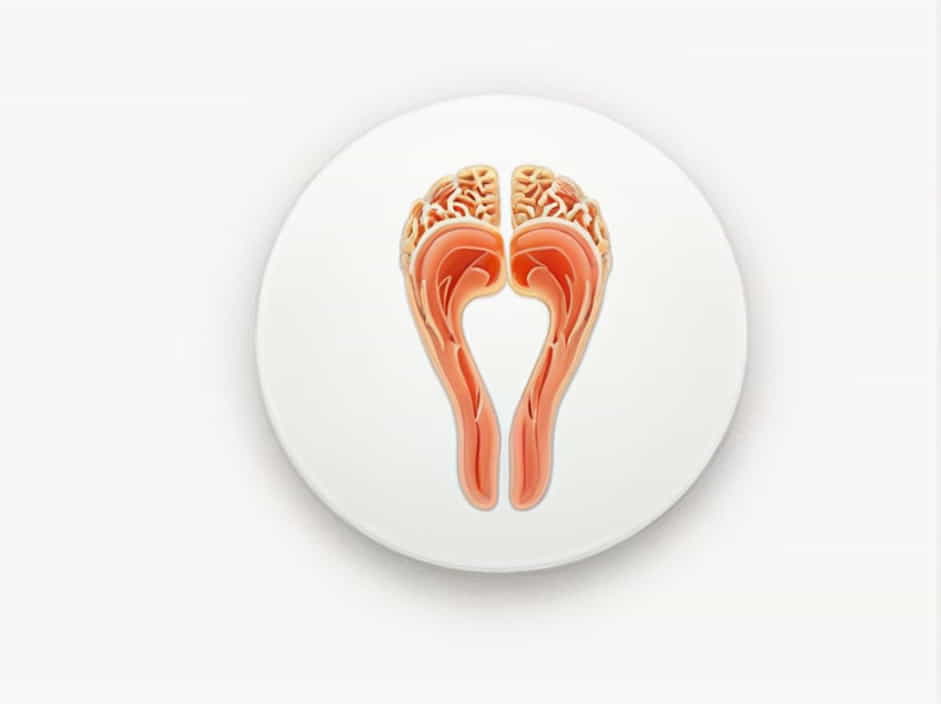The circumvallate papillae are large, dome-shaped structures located at the back of the tongue. They play a crucial role in taste perception and contain numerous taste buds. These papillae are unique because they are primarily innervated by the glossopharyngeal nerve (cranial nerve IX), unlike most of the tongue, which is supplied by the facial nerve (cranial nerve VII).
Understanding the nerve supply of circumvallate papillae is essential for medical and dental professionals, as well as anyone interested in the neurological and sensory functions of the tongue. This topic explores the anatomy, function, and clinical significance of the nerve supply to the circumvallate papillae.
Anatomy of Circumvallate Papillae
1. Location and Structure
- The circumvallate papillae are arranged in a V-shape at the back of the tongue, just in front of the sulcus terminalis (a groove separating the anterior and posterior parts of the tongue).
- They are larger than other types of papillae and are surrounded by moats, where saliva collects to help dissolve taste stimuli.
- Each papilla contains numerous taste buds, which detect bitter flavors and other taste sensations.
2. Relationship with Other Papillae
The tongue contains several types of papillae, each with a distinct function:
- Fungiform Papillae – Found on the anterior part of the tongue, mainly detecting sweet and salty tastes.
- Filiform Papillae – Located on the dorsal surface, responsible for texture perception rather than taste.
- Foliate Papillae – Found on the lateral sides of the tongue, sensitive to sour tastes.
- Circumvallate Papillae – Located at the back of the tongue, primarily responsible for detecting bitter tastes.
Nerve Supply of Circumvallate Papillae
The nerve supply to circumvallate papillae is mainly provided by the glossopharyngeal nerve (cranial nerve IX), with contributions from the lingual nerve (a branch of the mandibular nerve, V3) and autonomic fibers.
1. Sensory Innervation: Glossopharyngeal Nerve (Cranial Nerve IX)
- The glossopharyngeal nerve is the primary nerve responsible for the sensory supply of circumvallate papillae.
- It carries taste sensations from the papillae to the brain.
- The lingual branch of the glossopharyngeal nerve extends into the circumvallate papillae and their surrounding taste buds.
- This nerve also provides general sensory innervation (such as pain, temperature, and touch) to the posterior one-third of the tongue.
2. Parasympathetic and Sympathetic Innervation
The circumvallate papillae receive autonomic innervation, which regulates the secretion of saliva from nearby Von Ebner’s glands (serous salivary glands that help in taste perception).
- Parasympathetic fibers: Derived from the facial nerve (cranial nerve VII) via the chorda tympani and submandibular ganglion, controlling the secretion of saliva.
- Sympathetic fibers: Arise from the superior cervical ganglion, regulating blood flow to the tongue.
3. Role of the Lingual Nerve (Branch of Mandibular Nerve, V3)
- While the lingual nerve (a branch of the mandibular nerve, cranial nerve V3) is primarily responsible for general sensation in the anterior two-thirds of the tongue, it does not directly supply the circumvallate papillae.
- However, it helps convey some sensory information from the surrounding mucosa.
Function of the Nerve Supply in Taste Perception
The glossopharyngeal nerve carries signals from the circumvallate papillae taste buds to the brainstem, where they are processed in the nucleus solitarius before reaching the gustatory cortex in the brain.
The circumvallate papillae are particularly sensitive to bitter tastes, which is important for:
- Detecting toxins (many poisonous substances have a bitter taste).
- Enhancing digestion by stimulating saliva production.
- Contributing to flavor perception, working together with the olfactory system for a complete taste experience.
Clinical Significance of the Nerve Supply
1. Damage to the Glossopharyngeal Nerve
Injury or disease affecting the glossopharyngeal nerve can lead to:
- Loss of taste in the posterior one-third of the tongue.
- Difficulty swallowing (dysphagia) due to impaired nerve function.
- Reduced saliva secretion, affecting taste perception.
2. Taste Disorders (Dysgeusia or Ageusia)
- Dysgeusia: Altered taste perception, often linked to nerve damage, infections, medications, or vitamin deficiencies.
- Ageusia: Complete loss of taste, which can result from severe nerve injury or neurological disorders.
3. Effect of Salivary Gland Dysfunction
- Dysfunction in the Von Ebner’s glands can reduce saliva flow, impairing taste perception in the circumvallate papillae.
- This condition can be caused by dehydration, salivary gland infections, or autoimmune diseases like Sjögren’s syndrome.
4. Neurological Conditions Affecting Taste
Conditions like stroke, multiple sclerosis, or Parkinson’s disease can disrupt the neural pathways involved in taste perception, including those linked to the glossopharyngeal nerve.
How to Maintain Healthy Nerve Function for Taste Perception
1. Proper Nutrition
- A balanced diet rich in vitamins B12 and zinc supports nerve health.
- Avoid excessive alcohol and tobacco, which can damage taste receptors.
2. Hydration and Salivary Gland Care
- Drink plenty of water to support saliva production.
- Chewing sugar-free gum can help stimulate salivary glands.
3. Oral Hygiene
- Brush and floss regularly to prevent infections that can affect the tongue.
- Use alcohol-free mouthwash to avoid drying out the oral mucosa.
4. Avoid Nerve Damage
- Protect the glossopharyngeal nerve by preventing head and neck trauma.
- Seek medical attention for persistent taste disturbances or difficulty swallowing.
The circumvallate papillae play a crucial role in taste perception, especially for bitter flavors. Their primary nerve supply comes from the glossopharyngeal nerve (cranial nerve IX), with additional contributions from autonomic fibers and the lingual nerve.
Proper nerve function is essential for maintaining normal taste perception and overall oral health. Any damage to these nerves can lead to taste disorders, dry mouth, or swallowing difficulties. Maintaining good oral hygiene, staying hydrated, and protecting nerve health can help preserve the proper function of the circumvallate papillae and their nerve supply.
